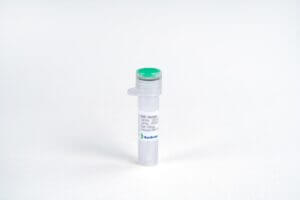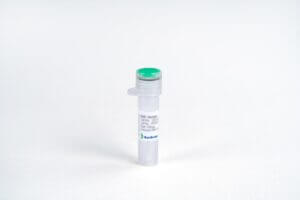100g
Showing 2101–2150 of 2169 results
-

Trypsin, 1:75, Powder
$163.09 Add to cart View Product DetailsTrypsin, 1:75, Powder
-

Tryptone
$117.39 Add to cart View Product DetailsTryptone
-

Tungsten Metal, 100 – 200 Mesh, Powder
$109.48 Add to cart View Product DetailsTungsten Metal, 100 – 200 Mesh, Powder
-

Tungsten Oxide, Powder
$258.65 Add to cart View Product DetailsTungsten Oxide, Powder
-

Tyramine Hydrochloride, Reagent
$681.75 Add to cart View Product DetailsTyramine Hydrochloride, Reagent
-

Tyrosine, USP
$74.72 Add to cart View Product DetailsTyrosine, USP
-

Ubidecarenone, USP Dietary Supplement
$3,660.24 Add to cart View Product DetailsUbidecarenone, USP Dietary Supplement
-

United Scientific® ALUMINUM SPRING SCALE, 100G / 1N
$4.06 Add to cart View Product DetailsALUMINUM SPRING SCALE, 100G / 1N
-

United Scientific® HEXAGONAL MASS, 100G
$1.41 Add to cart View Product DetailsHEXAGONAL MASS, 100G
-

United Scientific® INDIVIDUAL BRASS MASS, 100G
$4.85 Add to cart View Product DetailsINDIVIDUAL BRASS MASS, 100G
-

United Scientific® INDIVIDUAL HOOKED BRASS MASS, 100G
$3.65 Add to cart View Product DetailsINDIVIDUAL HOOKED BRASS MASS, 100G
-

United Scientific® SPRING SCALE 100G X 2G, 1N X 0.02N
$2.79 Add to cart View Product DetailsSPRING SCALE 100G X 2G, 1N X 0.02N
-

Uracil
$75.70 Add to cart View Product DetailsUracil
-

Uracil, Reagent
$103.29 Add to cart View Product DetailsUracil, Reagent
-

Uranine
$73.17 Add to cart View Product DetailsUranine
-

Uranyl Acetate, Dihydrate, Reagent
$4,776.80 Add to cart View Product DetailsUranyl Acetate, Dihydrate, Reagent
-

Urea Peroxide
$137.29 Add to cart View Product DetailsUrea Peroxide
-

Urethane, Reagent
$79.57 Add to cart View Product DetailsUrethane, Reagent
-

Uric Acid Sodium Salt
$587.48 Add to cart View Product DetailsUric Acid Sodium Salt
-

Uric Acid, Reagent
$429.53 Add to cart View Product DetailsUric Acid, Reagent
-

Uridine, Reagent
$585.96 Add to cart View Product DetailsUridine, Reagent
-

Ursodiol, USP
$2,260.91 Add to cart View Product DetailsUrsodiol, USP
-

Vanadium (III) Oxide
$1,109.22 Add to cart View Product DetailsVanadium (III) Oxide
-

Vanadyl Sulfate, Hydrate
$333.87 Add to cart View Product DetailsVanadyl Sulfate, Hydrate
-

Vanillic Acid
$238.71 Add to cart View Product DetailsVanillic Acid
-

VEGF-R2 Fc Chimera, Mouse
$172.50 Add to cart View Product DetailsVEGF-R2 belongs to a family of proteins called receptor tyrosine kinases. The receptor has three main parts: one part extends out of the cell and binds to VEGF, another spans the cell’s membrane, while the third part is found inside the cell. The current model of VEGF-R2 activation is that VEGF binds to individual VEGF-R2 receptor proteins on the membrane, and brings two of them close enough to form a complex called a dimer. The receptor dimer is activated and initiates signaling within the cell. VEGF-R2 is a receptor tyrosine kinase (RTK) which transduces biochemical signals via lateral dimerization in the plasma membrane. Like most RTKs, VEGF-R2 is composed of an extracellular (EC) domain, a transmembrane (TM) domain, and an intracellular (IC) domain consisting of a kinase domain and sequences required for downstream signaling. The EC domain consists of seven immunoglobulin homology (Ig) domains, termed D1 (at the N-terminus) to D7 (closest to the membrane). VEGF-R2 binds to, and is activated by the ligands VEGF-A, VEGF-E, and a number of processed forms of VEGF-C and VEGF-D. Ligand binding to VEGF-R2 is mediated by Ig-domains 2 and 3 and the linker between D2 and D3.
-

VEGF165, Human
$392.44 Add to cart View Product DetailsVascular Endothelial Growth Factor (VEGF) is a potent growth and angiogenic cytokine. It stimulates proliferation and survival of endothelial cells, and promotes angiogenesis and vascular permeability. Expressed in vascularized tissues, Vascular Endothelial Growth Factor (VEGF) plays a prominent role in normal and pathological angiogenesis. Substantial evidence implicates Vascular Endothelial Growth Factor (VEGF) in the induction of tumor metastasis and intra-ocular neovascular syndromes. Vascular Endothelial Growth Factor (VEGF) signals through the three receptors; fms-like tyrosine kinase (flt-1), KDR gene product (the murine homolog of KDR is the flk-1 gene product) and the flt4 gene product.
-

Verapamil Hydrochloride, USP
$2,399.07 Add to cart View Product DetailsVerapamil Hydrochloride, USP
-

Veratrole
$69.64 Add to cart View Product DetailsVeratrole
-

Victoria Blue R
$264.56 Add to cart View Product DetailsVictoria Blue R
-

Vinyl Sulfone
$608.44 Add to cart View Product DetailsVinyl Sulfone
-

Vinylacetic Acid
$529.17 Add to cart View Product DetailsVinylacetic Acid
-

Vinylmagnesium Bromide, (14 Percent in Tetrahydrofuran, ca. 1mol/L)
$99.67 Add to cart View Product DetailsVinylmagnesium Bromide, (14 Percent in Tetrahydrofuran, ca. 1mol/L)
-

VISTA/B7-H5 Fc Chimera, Human
$172.50 Add to cart View Product DetailsV-domain Ig suppressor of T cell activation (VISTA), also known as B7-H5, is a type I transmembrane protein that functions as an immune checkpoint. VISTA belongs to the immunoglobulin superfamily and has one IgV domain. It is primarily expressed in white blood cells and its transcription is partially controlled by p53. VISTA can act as both a ligand and a receptor on T cells to inhibit T cell effector function and maintain peripheral tolerance. VISTA may also promote differentiation of embryonic stem cells by inhibiting BMP4 signaling (By similarity) and may stimulate MMP14-mediated MMP2 activation.
-

VISTA/B7-H5, His, Human
$172.50 Add to cart View Product DetailsV-domain Ig suppressor of T cell activation (VISTA), also known as B7-H5, is a type I transmembrane protein that functions as an immune checkpoint. VISTA belongs to the immunoglobulin superfamily and has one IgV domain. It is primarily expressed in white blood cells and its transcription is partially controlled by p53. VISTA can act as both a ligand and a receptor on T cells to inhibit T cell effector function and maintain peripheral tolerance. VISTA may also promote differentiation of embryonic stem cells by inhibiting BMP4 signaling (By similarity) and may stimulate MMP14-mediated MMP2 activation.
-

Vitamin A Acetate, 150 mg/g, Dry, USP
$385.37 Add to cart View Product DetailsVitamin A Acetate, 150 mg/g, Dry, USP
-

Vitamin E Nicotinate
$815.63 Add to cart View Product DetailsVitamin E Nicotinate
-

White Wax, Pastilles, NF
$42.90 Add to cart View Product DetailsWhite Wax, Pastilles, NF
-

Wormwood Oil, European
$141.30 Add to cart View Product DetailsWormwood Oil, European
-

Wright’s Stain, Certified, Powder
$405.81 Add to cart View Product DetailsWright’s Stain, Certified, Powder
-

Xanthan Gum, FCC
$60.80 Add to cart View Product DetailsXanthan Gum, FCC
-

Xanthane Hydride
$424.43 Add to cart View Product DetailsXanthane Hydride
-

Xanthine
$470.76 Add to cart View Product DetailsXanthine
-

Xanthone
$379.27 Add to cart View Product DetailsXanthone
-

Xylenol Orange, Water Soluble, Reagent, ACS
$893.71 Add to cart View Product DetailsXylenol Orange, Water Soluble, Reagent, ACS
-

Xylitol
$42.11 Add to cart View Product DetailsXylitol
-

Xylitol, FCC
$67.10 Add to cart View Product DetailsXylitol, FCC
-

Xylitol, NF
$62.99 Add to cart View Product DetailsXylitol, NF
-

Xylose, CP
$49.57 Add to cart View Product DetailsXylose, CP
-

Xylose, USP
$105.31 Add to cart View Product DetailsXylose, USP






